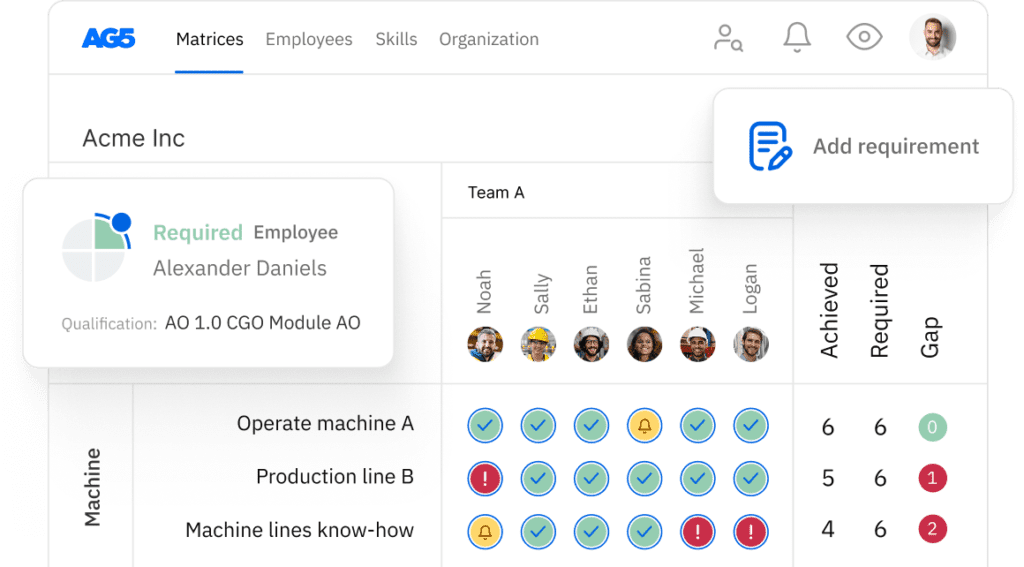What are career development tools?
Career development tools are essential digital platforms that enable organizations to map, track, and enhance workforce skills. Features such as skills matrices, gap analysis, certificate tracking, and LMS integration streamline operations, saving time and reducing costs.
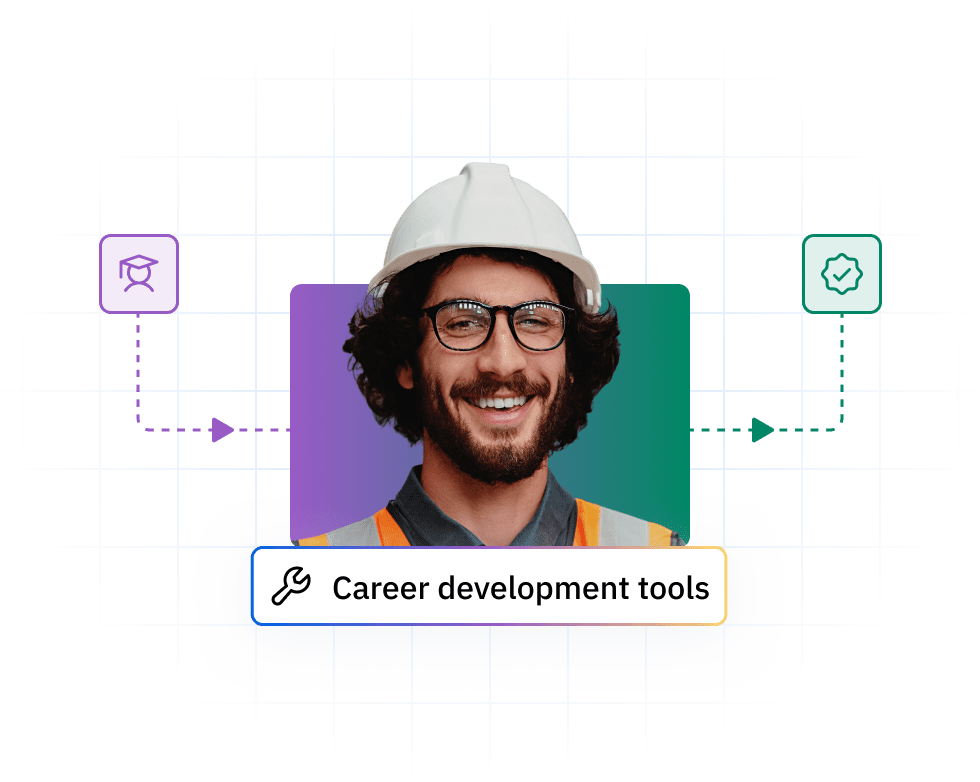
Career development tools are digital solutions that help organizations and individuals map, track, and enhance skills and career progress. They support structured learning, align employee growth with business goals, and provide visibility into workforce capabilities and readiness.
In a world where skills evolve faster than job titles, career development tools have become indispensable.
They enable HR leaders, L&D managers, and operations leads to move beyond outdated spreadsheets and fragmented records.
These tools typically include:
- Skills matrices to visualize team capabilities
- Gap analysis to identify development priorities
- Training alignment to connect learning to business needs
- Compliance tracking to ensure certifications and skills stay current
- Progress dashboards to monitor growth and readiness
A robust career development platform like AG5 ensures that employees are equipped for future roles, audits are no longer fire drills, and training investments deliver measurable ROI.
By making skills visible and actionable, such tools empower organizations to move from reactive workforce planning to proactive talent development – a key competitive edge in today’s dynamic markets.
Why use career development tools today?Copied
Career development tools help organizations build an agile, future-ready workforce.
They enable skills visibility, support compliance, align training with actual needs, and drive efficiency – ensuring that talent development directly supports business outcomes.
Supporting content
Why are career development tools no longer optional? Because modern organizations face mounting pressures:
- Roles evolve rapidly, and outdated skills can become liabilities
- Compliance demands grow stricter, with costly penalties for lapses
- Manual tracking through Excel or disparate systems wastes time and obscures insights
- Employees expect clear career paths and personalized development
With the right tools in place, HR and L&D leaders can:
- Visualize skills and gaps in real time – no more guesswork
- Link training directly to business needs – optimizing development budgets
- Stay always audit-ready – automating compliance tracking and reporting
- Empower employees – with self-service access to skills data and progress
Moreover, modern career development tools like skills management software integrate seamlessly with existing LMS and HRIS platforms, eliminating redundant admin and providing a single source of truth.
In short: they transform career development from a fragmented process into a strategic lever for organizational success.
How career development tools improve skills visibilityCopied
Career development tools bring skills out of hidden spreadsheets and into clear, actionable views. Skills matrices, dashboards, and real-time data ensure managers and employees alike know exactly who can do what – and where development is needed.
“Who knows what?” is a question many HR, L&D, and operations leaders can’t confidently answer. Career development tools – especially those featuring skills matrices – change this.
With AG5, for example, organizations replace static Excel files with dynamic, cloud-based matrices that update in real time.
Key features driving skills visibility
| Feature | Benefit | Example |
|---|---|---|
| Skills matrix | Visualize team capabilities across roles | Instantly see which technicians are certified for specific machinery |
| Gap analysis & forecasting | Identify missing or declining skills | Flag skills that need attention before compliance audits |
| Self & manager assessments | Create shared understanding of current proficiency | Support performance reviews and promotion decisions |
| Real-time dashboards | Provide at-a-glance insights | Enable executives to track workforce readiness across locations |
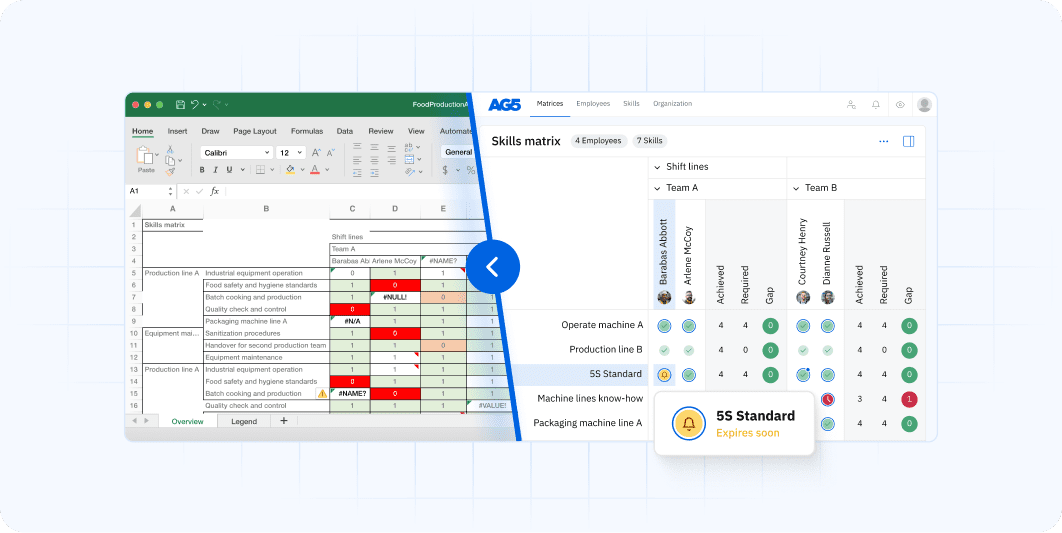
By centralizing skills data and making it easily accessible, career development tools eliminate “Excel hell” and foster a culture of transparency and growth.
How to ensure audit & compliance readiness with career development toolsCopied
Career development tools ensure audit and compliance readiness by tracking certifications, providing expiry alerts, and maintaining detailed audit trails. This proactive approach eliminates last-minute scrambles and safeguards against costly compliance lapses.
For compliance officers and HR leaders, audits can trigger anxiety, especially when certification records are buried in spreadsheets or scattered across systems. Career development tools change this dynamic entirely.
Platforms like AG5 include automated certificate tracking and expiry alerts, ensuring that compliance is never left to chance.
Core compliance features in career development tools
| Feature | What it does | Impact |
|---|---|---|
| Certificate vault | Securely stores all qualification documents | Instant access during audits |
| Expiry alerts | Sends automated notifications well before certifications expire | Prevents compliance gaps and penalties |
| Audit trails | Maintains detailed records of changes and approvals | Demonstrates due diligence to auditors |
| Approval workflows | Streamlines the certification renewal process | Saves time and reduces admin burden |
Example use case
Imagine preparing for an 9001 audit. Instead of weeks of chasing paper trails, you simply generate a compliance report from your career development tool. Auditors see a complete, verified history, without a hitch.
By building compliance readiness into everyday processes, career development tools help organizations avoid both fire drills and financial penalties.
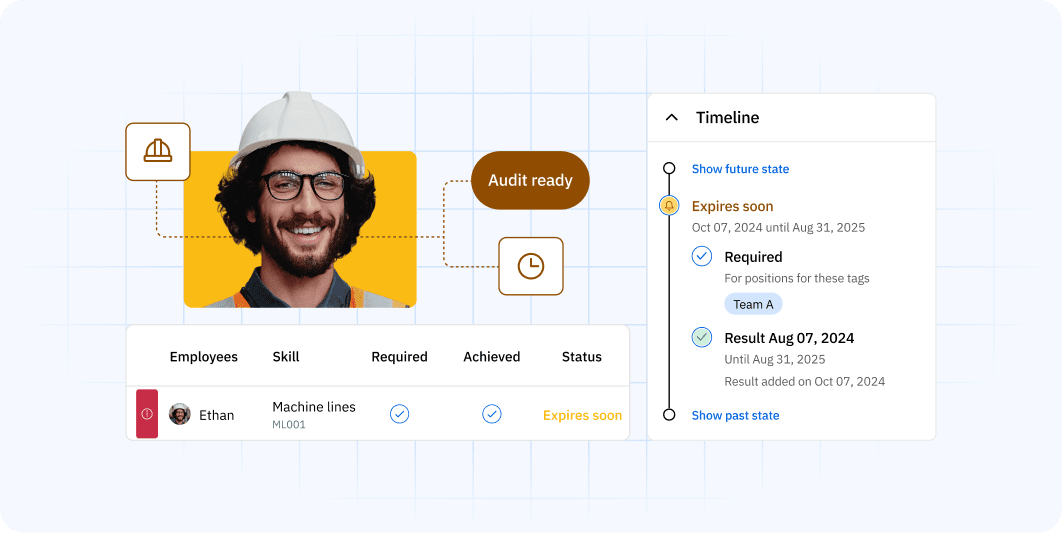
How training alignment drives effective career developmentCopied
Career development tools drive training alignment by linking identified skills gaps directly to targeted learning pathways. This ensures that training efforts are purposeful, measurable, and fully aligned with both employee growth and organizational goals.
Too often, training plans are disconnected from real-world needs. Employees attend generic courses, while critical skills gaps remain unaddressed.
Career development tools close this gap by connecting skills management with learning management.
AG5’s platform, for example, integrates seamlessly with LMS systems, allowing organizations to assign training based on real-time skills data.
How training alignment works
| Step | Action | Outcome |
|---|---|---|
| 1. Identify gaps | Use gap analysis to pinpoint missing or declining skills | Focus training on areas that matter most |
| 2. Link training | Connect skills gaps to specific LMS courses or learning modules | Ensure targeted, relevant learning |
| 3. Monitor progress | Track completion and proficiency improvements | Demonstrate training impact on performance |
| 4. Update skills matrix | Reflect completed training in skills visibility dashboards | Maintain up-to-date workforce readiness insights |
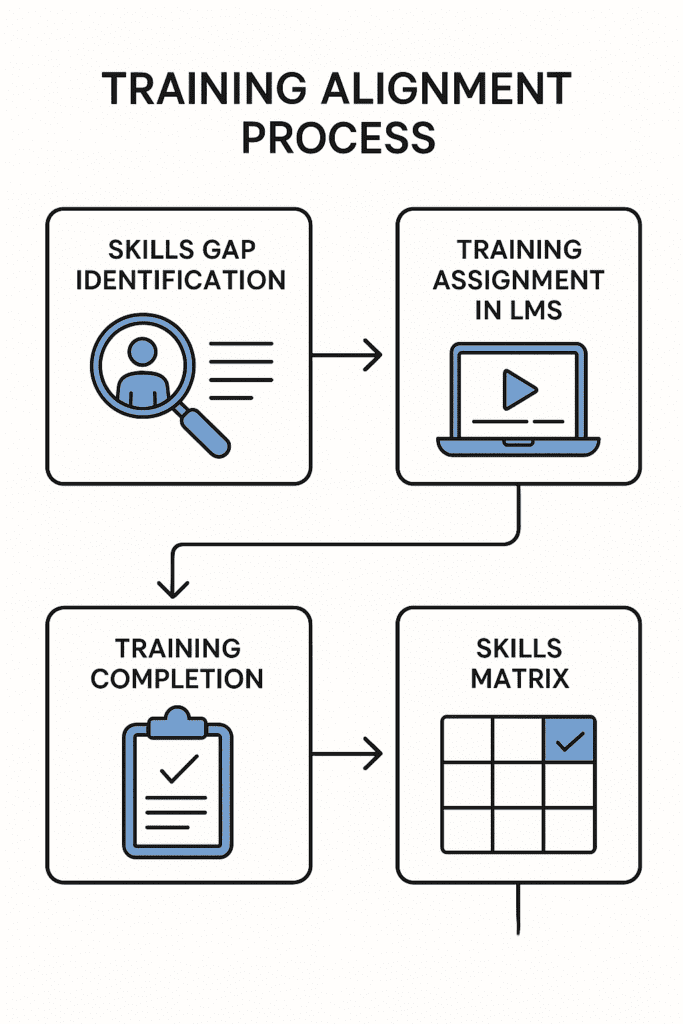
Benefits of aligned training include:
- Maximized ROI on learning spend
- Accelerated employee development
- Improved compliance and audit outcomes
- Greater engagement through personalized learning pathways
By using career development tools to drive training alignment, organizations move from a “tick-box” training culture to a strategic enabler of workforce agility.
How career development tools save time & reduce costsCopied
Career development tools streamline manual processes, automate compliance tracking, and optimize training efforts. This saves HR, L&D, and operations teams significant time while reducing training and audit-related costs.
Managing workforce development manually is a hidden drain on organizational resources.
Updating spreadsheets, chasing certifications, preparing for audits – it all consumes time better spent on strategic initiatives.
Career development tools like AG5 replace fragmented, labor-intensive processes with efficient, automated workflows.
Where career development tools save time and cost
| Area | Manual effort | Automated with career development tools | Cost impact |
|---|---|---|---|
| Skills tracking | Updating Excel files manually | Real-time updates via skills matrices | Frees HR/L&D capacity |
| Certification management | Chasing expiry dates via email | Automated alerts and tracking | Avoids non-compliance fines |
| Audit preparation | Manual document compilation | One-click audit reports | Reduces consultant/audit prep costs |
| Training alignment | Ad hoc course selection | Skills-linked LMS integration | Improves training ROI |
Example impact
A mid-sized manufacturer replaced its manual Excel-based skills matrix with AG5. Result:
- Time spent on audit prep reduced from 3 weeks to 2 days
- Training costs cut by 20% through targeted learning
- Admin time saved: equivalent to one full-time HR resource
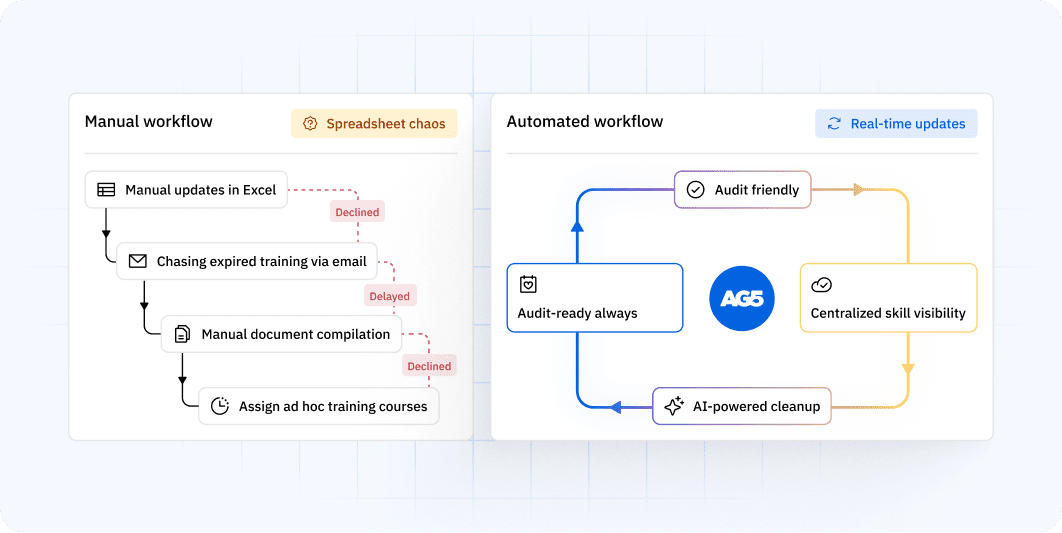
Ultimately, time and cost savings free HR and L&D teams to focus on strategic talent initiatives, rather than administrative firefighting.
What features to look for in career development toolsCopied
The best career development tools offer dynamic skills tracking, gap analysis, certification management, LMS integration, and insightful reporting.
Look for platforms that automate manual tasks and provide real-time visibility into workforce capabilities.
Choosing the right career development tool is crucial – not all solutions are created equal.
Many platforms offer surface-level features without addressing the real pain points of skills visibility, compliance, and training alignment.
Here is a checklist of must-have features for any modern career development tool:
Essential features checklist
| Feature | Why it matters | Example impact |
|---|---|---|
| Skills matrix builder | Visualizes team capabilities; replaces Excel | Instant skills visibility for managers and HR |
| Gap analysis & alerts | Identifies missing or declining skills | Proactive workforce planning |
| Certification tracking | Automates compliance readiness | No more last-minute audit scrambles |
| LMS integration | Links training to actual skills needs | Higher training ROI and engagement |
| Mobile access | Enables frontline self-assessments and updates | Keeps skills data fresh and inclusive |
| Audit logs & reporting | Provides proof of compliance and readiness | Effortless audit preparation |
| Expert finder | Supports internal mobility and mentoring | Accelerates project staffing and career progression |
Platforms like skills management software stand out because they address the full lifecycle of career development from skills tracking to compliance to training alignment in a single system.
Top career development tools to considerCopied
Organizations can choose from various categories of career development tools, from skills management platforms to LMS systems and mentoring software.
The key is to select tools that integrate seamlessly and address both workforce development and compliance needs.
The market offers a wide range of career development tools. Successful organizations typically adopt a combination of the following:
Categories of career development tools
| Category | Purpose | Example tools |
|---|---|---|
| Skills management software | Visualize and manage workforce skills and gaps | AG5, Skills Base |
| Learning Management Systems (LMS) | Deliver and track learning content | Docebo, Cornerstone |
| Career pathing platforms | Map career journeys and support internal mobility | Fuel50, TalentGuard |
| Mentoring & coaching platforms | Facilitate personalized development through mentoring | MentorcliQ, Chronus |
| Assessment & feedback tools | Support self and 360-degree assessments | Culture Amp, SurveyMonkey Engage |
Among these, skills management software plays a pivotal role, acting as the backbone for a unified career development strategy.
AG5 stands out by offering:
- Real-time skills visibility
- Proactive gap identification
- Automated compliance tracking
- Seamless LMS integration
- Tangible time and cost savings
By anchoring your strategy around a strong skills management core, you ensure that career development is both strategic and operationally effective.
Conclusion: Future-proofing your workforce with the right toolsCopied
Investing in career development is essential for building an agile, audit-ready, and future-proof workforce.
The right tools provide skills visibility, align training with real needs, and drive measurable business value.
In today’s dynamic business environment, standing still means falling behind. Career development tools enable organizations to:
- Visualize and close critical skills gaps
- Ensure continuous compliance readiness
- Align training with strategic goals, maximizing impact
- Save time and reduce costs through automation
- Empower employees with clear career pathways and visibility
By adopting a platform like AG5, you not only replace “Excel hell” with real-time insights, you also build the foundation for a workforce that is ready to meet today’s demands and tomorrow’s opportunities.
Remember: tools alone are not the solution. But when used strategically, they transform career development from an administrative task into a powerful driver of organizational success.
FAQs Copied
-
What are career development tools?
-
Why are career development tools important today?
-
How do career development tools improve skills visibility?
-
How do career development tools support compliance readiness?
-
What are the key features to look for in career development tools?
-
What types of career development tools should organizations consider?

